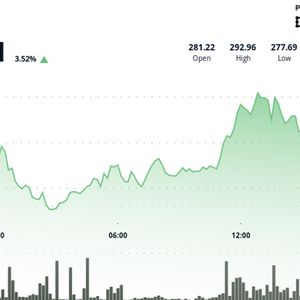Insurance stands as one of finance’s foundational primitives—an essential scaffold that undergirds every major market from commodities to credit. Since the 1600s, no vibrant financial ecosystem has thrived without a robust insurance mechanism: market participants demand quantifiable measures of risk before committing capital. Yet in decentralized finance(DeFi)’s first wave—lending, exchanges, derivatives—insurance remained an afterthought, implemented in rudimentary forms or absent altogether. As DeFi targets its next inflection point, embedding sophisticated, institution-grade insurance models will be critical to unlocking deep pools of capital and delivering enduring resilience. A Brief History of Risk and Insurance Modern insurance has a long history. In the 16th century, Gerolamo Cardano’s early treatises on games of chance pioneered probabilistic thinking, framing uncertainty in mathematical terms (eventually he would give his name to today’s blockchain). In the mid-17th century, an epochal correspondence between Blaise Pascal and Pierre de Fermat laid the empirical bedrock for probability theory, transforming chance from mysticism into a quantifiable science. By the 19th century, Carl Friedrich Gauss’s formalization of the normal distribution enabled statisticians to model deviations around an expected value systematically—a breakthrough instrumental to actuarial science. At the dawn of the 20th century, Louis Bachelier’s seminal work on the random walk of asset prices presaged modern quantitative finance, informing everything from option pricing to risk management. Later in that century, Harry Markowitz’s portfolio theory reframed diversification as a quantitative process, offering a rigorous framework for balancing risk and return. The Black-Scholes-Merton model further advanced the field by providing a tractable means to derive implied volatilities and price options—cornerstones of modern derivatives markets. In recent decades, innovators like Paul Embrechts and Philippe Artzner enriched risk theory with copula statistical models and coherent risk measures, enabling the systematic capture of extreme tail risks and systemic dependencies. Is DeFi Insurable? Insurance requires four core prerequisites: diversified risk vectors, a risk premium exceeding capital costs, scalable pools of capital, and quantifiable exposures. DeFi clearly offers quantifiable hazards—protocol exploits, oracle manipulations, governance attacks—but challenges to insurability remain. Early DeFi insurance initiatives struggled with limited actuarial sophistication, untested capital structures, and prohibitive premiums driven by the high opportunity cost of capital. Moreover, DeFi’s rapid innovation cycle creates a shifting threat landscape: vulnerabilities in one protocol seldom translate neatly to another, and the speed of code changes outpaces traditional underwriters’ capacity to assess risk. Overcoming these obstacles will require next-generation insurance architectures that can adapt dynamically to evolving hazard profiles. High Price Insurance Capital At the heart of any insurance construct lies the cost of capital. DeFi insurance pools typically accept ETH, BTC, or stablecoins—assets that themselves generate on-chain yield via staking, lending, or liquidity provisions. Insurers must therefore offer returns above these native yields to attract underwriters, driving premiums upward. This results in a classic Catch-22 : high premiums deter protocol teams, yet low capital costs undermine coverage capacity and solvent reserves. To break this impasse, market architects must tap alternative capital sources. Institutional investors—pension funds, endowments, hedge funds—possess vast pools of capital with long-term horizons. By designing insurance products aligned to these investors’ risk-return benchmarks (e.g., structured tranches offering defined upside in exchange for taking first-loss positions), DeFi insurance constructs can achieve a sustainable cost of capital, balancing affordability with solvency. The Law of Large Numbers Fails in DeFi Jakob Bernoulli’s law of large numbers underpins classical insurance: as policy counts grow, actual loss ratios converge toward expected values, enabling precise actuarial pricing. Mortality tables by Edmond Halley and Abraham de Moivre epitomize this principle, translating population statistics into dependable premiums. DeFi’s nascent ecosystem, however, features only a finite—and often correlated—set of protocols. Catastrophic events such as multi-protocol oracle manipulations expose systemic dependencies that violate independence assumptions. Instead of relying solely on volume, DeFi insurance must employ layered diversification: reinsurance agreements across independent risk pools, capital tranching to allocate losses by seniority, and parametric triggers that automate coverage payouts based on on-chain metrics (e.g., price slippage thresholds, oracle deviation tolerances). Such architectures can approximate the smoothing benefits achieved by traditional insurers. Challenges Quantifying DeFi Risk Quantitative risk modeling in DeFi remains in its formative stages. With only a handful of years of historical data and immense heterogeneity across smart-contract platforms, extrapolating risk from one protocol to another carries significant uncertainty. Past exploits—on Venus, Bancor or Compound—yield forensic insights but limited predictive power for novel vulnerabilities in emerging protocols such as Aave v3 or Uniswap v4. Building robust DeFi risk frameworks demands hybrid approaches: integrating on-chain analytics for real-time exposure tracking, formal security verification of smart-contract code, oracles for external event validation, and comprehensive stress-tests against simulated attack vectors. Machine-learning models can augment these methods—clustering protocols by code patterns, transaction behaviors, or governance structures—yet must be guarded against overfitting sparse data. Collaborative risk consortia, where protocol teams and insurers share anonymized data on exploits and failure modes, could create a richer data foundation for next-generation models. Toward an Institutional DeFi Insurance Market At its current scale, DeFi beckons for a reliable insurance primitive. Embedding sophisticated, scalable insurance solutions will not only shield capital but also translate abstract hazards—flash loan attacks, governance exploits, oracle failures—into measurable financial exposures. By aligning product design with institutional risk appetites, leveraging layered diversification, and advancing quantitative risk models, a vibrant DeFi insurance market could unlock previously inaccessible capital pools. Such an ecosystem promises deeper liquidity, enhanced counterparty confidence, and broader participation—from family offices to sovereign wealth funds—transforming DeFi from an experimental frontier into a cornerstone of global finance.


















